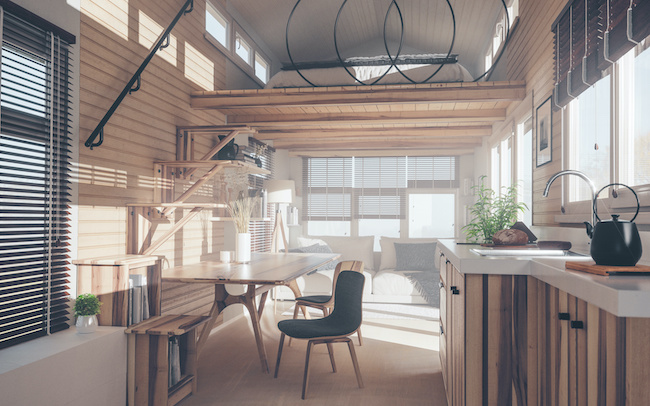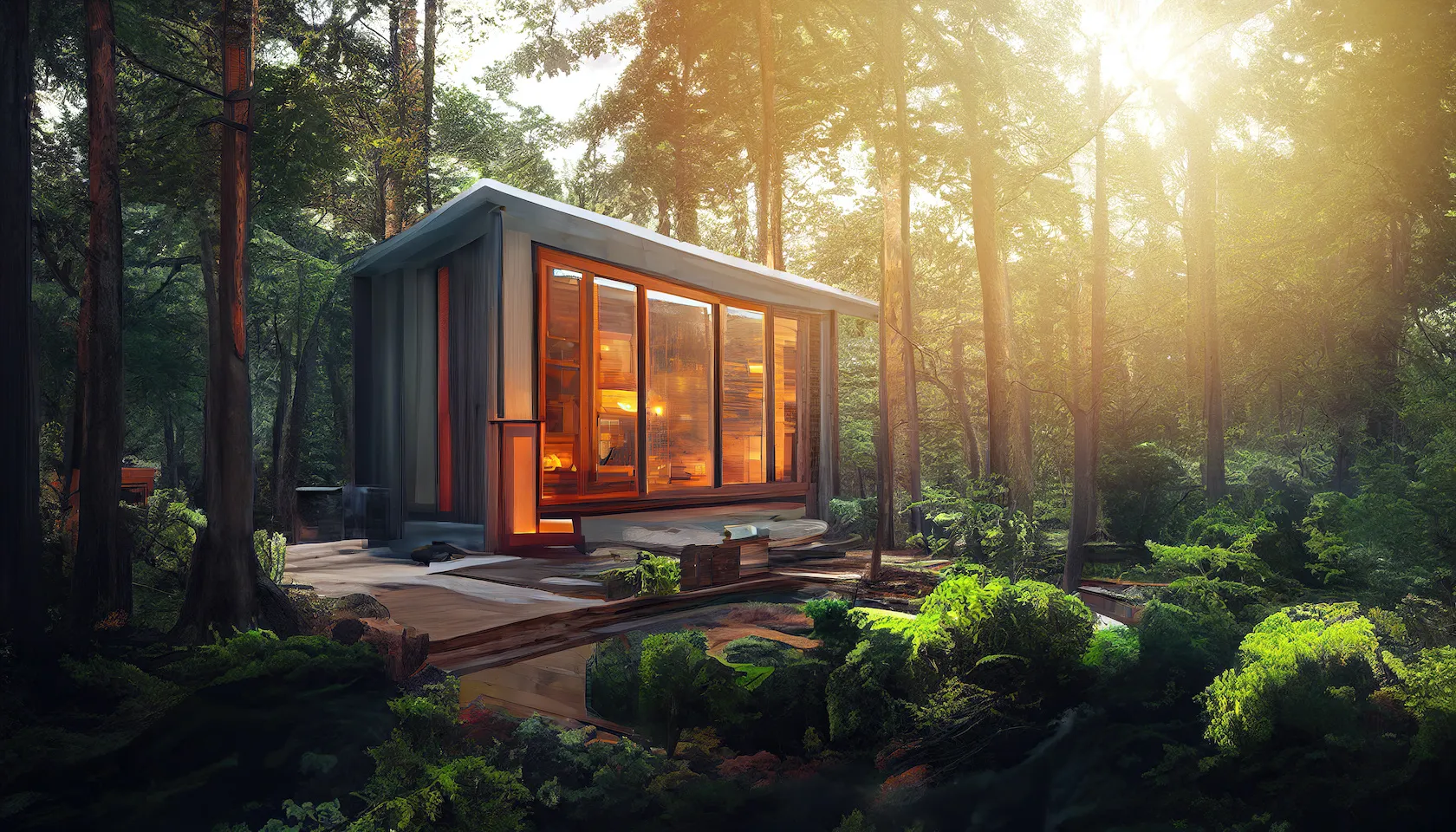Lifestyle: 3 housing trends of the future!
In recent years, our outlook on life has changed. Since the corona crisis, we have realised how important our homes (and gardens) are as places to work and study. We have found that importing raw and building materials from other parts of the world has become less natural. And because of the war in Ukraine, everyone is thinking about rising energy prices these days. The world is changing. And us? we are changing with it. We live, we build, we renovate, but differently.
Trend 1: Teleworking
Working from home seems to be catching on and doesn't seem to be going away any time soon. Many people schedule their office work flexibly. People work from home several days a week, so they need a comfortable and quiet place for this.
To make this place as efficient as possible, we must first ask ourselves a few questions: What is important for doing the job? Will clients be coming to your home? Or is it mainly a space to video call in peace and quiet? The answer to these questions does not mean that every family should suddenly provide multiple home offices. For example, a bedroom that is not used during the week because a child lives in a student flat can become an ideal home office with a few clever adjustments.
Still need a separate room? Dare to think out of the box. For example, one can opt for a modular office in the garden that also becomes a place for your family to relax on weekends. Or a quiet place to read or study in the countryside. Good to know: In most municipalities, outbuildings of up to 40 square metres can be built in the garden with a cornice height of 3.5 metres.
Note: Without planning permission, it may not have a habitable function. But nothing stops you from asking your local council or town planning office what is possible.
Trend 2: Garden experiences such as fruit picking, fire pots and wadis
Those who have gardens, terraces or even small courtyards with some plants tend to look back on the lockdown more positively. Gardens are no longer just playgrounds for children. Gardens are more than ever places to relax in nature. Where is the shade? Which flowers, plants and crops are good for climate-friendly gardens that attract birds, bees and butterflies? How do you deal with seasons and drought?
What we see is the growing popularity of the wadi as a rainwater overflow. Connecting to the street sewer is no longer possible. Excess rainwater must seep into your garden. And wadi or soil infiltration is a cheap and cool option and can already be realised with a 30 cm shallow pond in the garden. With adapted plants, you create natural water infiltration and a natural environment for plants and animals. The Flemish Environment Agency (VMM) advises on environmental permits. They determine the maintenance of green spaces and pay a lot of attention to biodiversity.
After Corona, terrace design is also more popular. You can meet your friends outside at any time of the year. Fire pits are more popular than ever for sitting outside with friends and neighbours, even on cool nights.

Trend 3: compact living vs modular or spatial thinking
It is difficult to build or renovate on a small budget. For many young people, life is more important than (large) homes. We often hear about Tiny Houses, Slow Cabins and Nature Houses. At the same time, there is a growing demand for cohabitation forms, such as kangaroo homes, where retired parents or parents-in-law move in. As an alternative, co-housing is being considered. Everything is evolving and we notice this in our society. Ask yourself the question: how big do I want to live? Does it have to be 400m2 when in 250m2 can do a lot? The bigger the house, the more budget and materials you need.
From the past, we have learnt that the living room should be 8x5 or 40 square metres, but 7/4 can also be good. It also depends on who lives there. Does the resident need a large hobby room? Then you need a bigger place. We are thinking more and more about our lifestyle and start modularising it. How many bathrooms and internal doors do you really need, do you really need 3 bedrooms for 3 children?
Is it one big room? You can also create intimacy with sliding walls. You don't need another room for everything. Most people do nothing with half the house. Is that still acceptable? After all, this emptiness also needs to be cared for, cleaned and heated. Compact living means thinking more spatially. We are fans of combo rooms. It's interesting to think about different spatial experiences. Everyone used to sit in the chairs by the front door and since then the TV has long been a central part of the living room. Many people now want to get rid of it.
The smaller the home, the more budget one has to finish with quality and local materials. Residential quality takes precedence over residential quantity. It is recommended to tackle the shell first. Insulate and make sure your place is comfortable and acoustically sound. So you can relax at home. People, including young people, often set their own standards very high. Does everything really have to be 100% finished from the start? More and more people are building their homes step by step and thus spreading their costs over time.
Stay tuned, in our next trend article we'll talk about versatile pieces!

